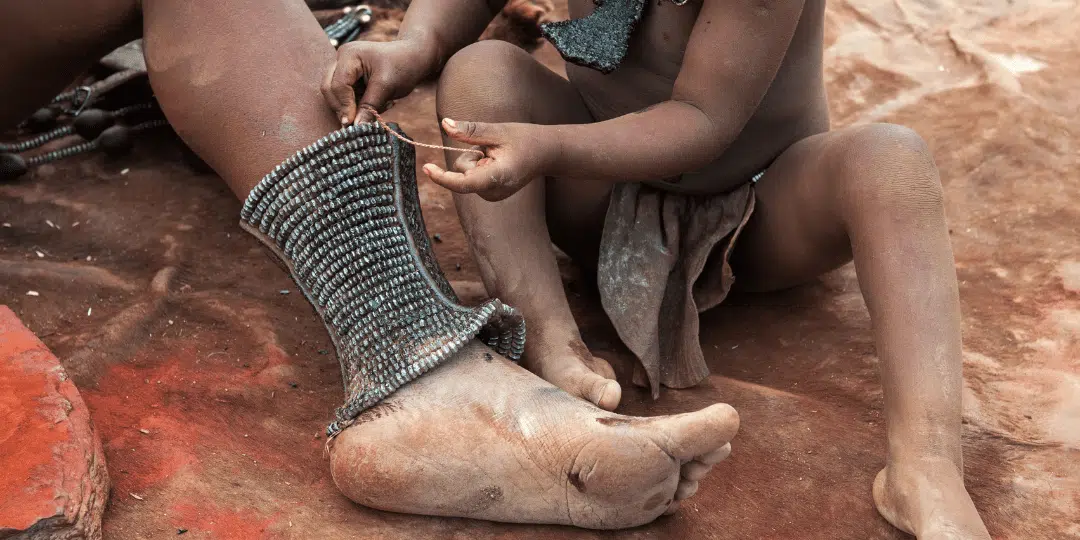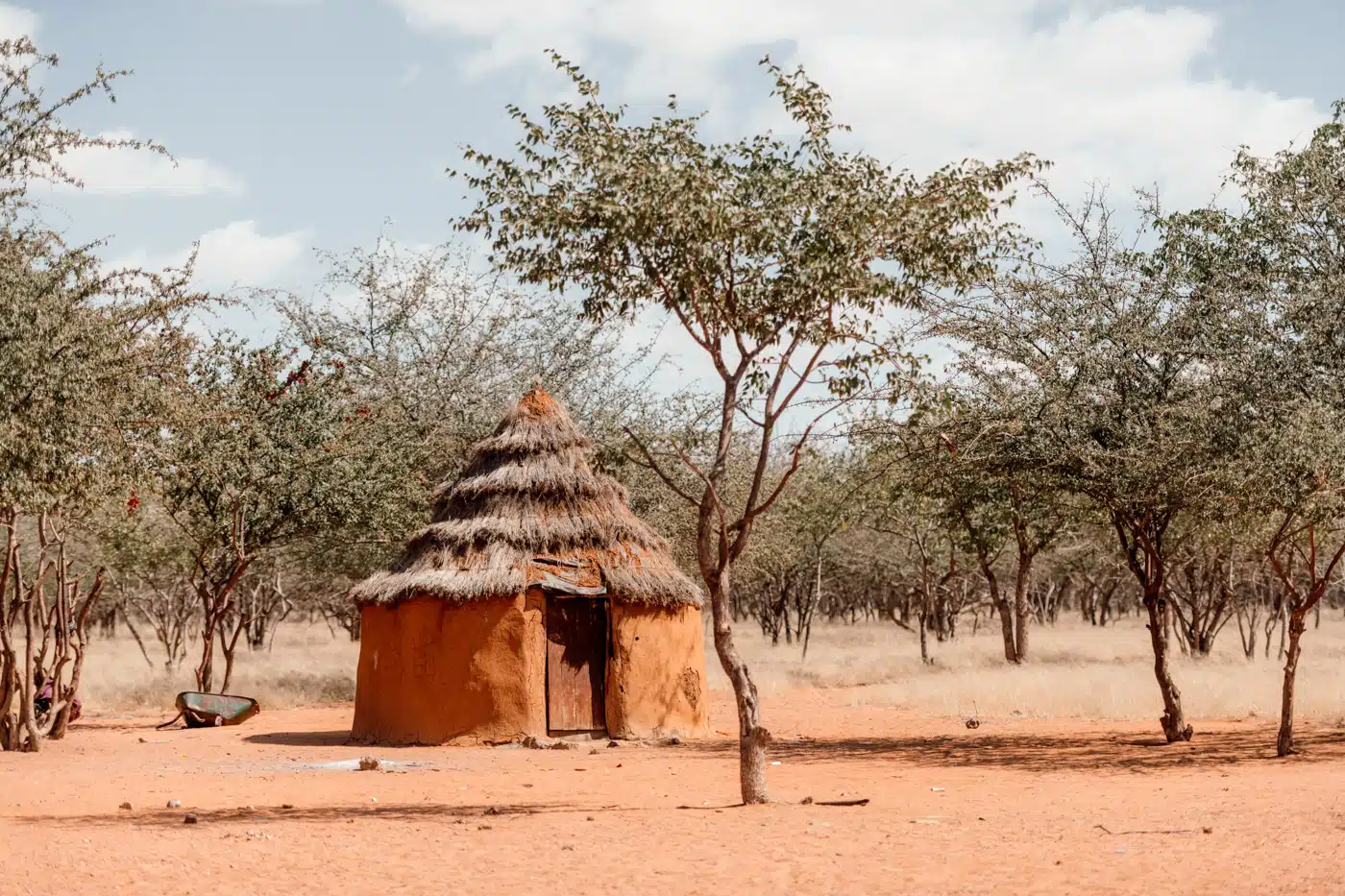Formation of a Clan
The Herero people, who moved from Angola to the Kunene region of Namibia five hundred years ago, are now part of what Namibia is. During the late 19th century, due to a severe shortage of cows caused by a relentless bovine epidemic, the tribe split into two very distinct groups. One group, known as the OvaHimba, made efforts to explore new regions in the south in order to enhance their chances of survival. The other group, known as the OtjiHimba, held fast to their customs and traditions in their territory. While the two groups continue to share the Herero language, the OtjiHimba, now known as the OvaHimba, have their own dialect called OtjiHimba.
‘Beggar’ means Himba when freely translated from the Otjiherero language, but OvaHimba is the more correct term commonly used in the West.
The OvaHimba are the remaining semi-nomadic herders in Namibia, whereas the OvaTwa is a branch of the Himbas known as hunter-gatherers. Approximately 50,000 OvaHimba still reside across the Kunene River in Angola and in the Kunene region in Namibia.
OvaHimba Women have a Red Complexion
The OvaHimba tribe, known for their distinctive color, applies a deep orange paste made of a mixture of pigment ochre and butterfat, pounded with a resin shrub called omuzumba, to their skin. This paste, which is perfumed with an aromatic stone called hematite, symbolizes the essence of life and the life-giving earth’s beauty. It not only gives their hair a characteristic style and texture but also blocks hair growth and keeps their skin moist and clean. The OvaHimba consider the application of this deep orange paste to their skin as a significant cultural beauty motivation. Both male and female members of the tribe have a distinct color, courtesy of this cosmetic mixture. They sometimes wear sandals crafted from discarded car tires and their clothes often consist of a simple skirt made from calfskin, although they are increasingly using modern materials. The natural environment of the OvaHimba is semi-arid and hot.
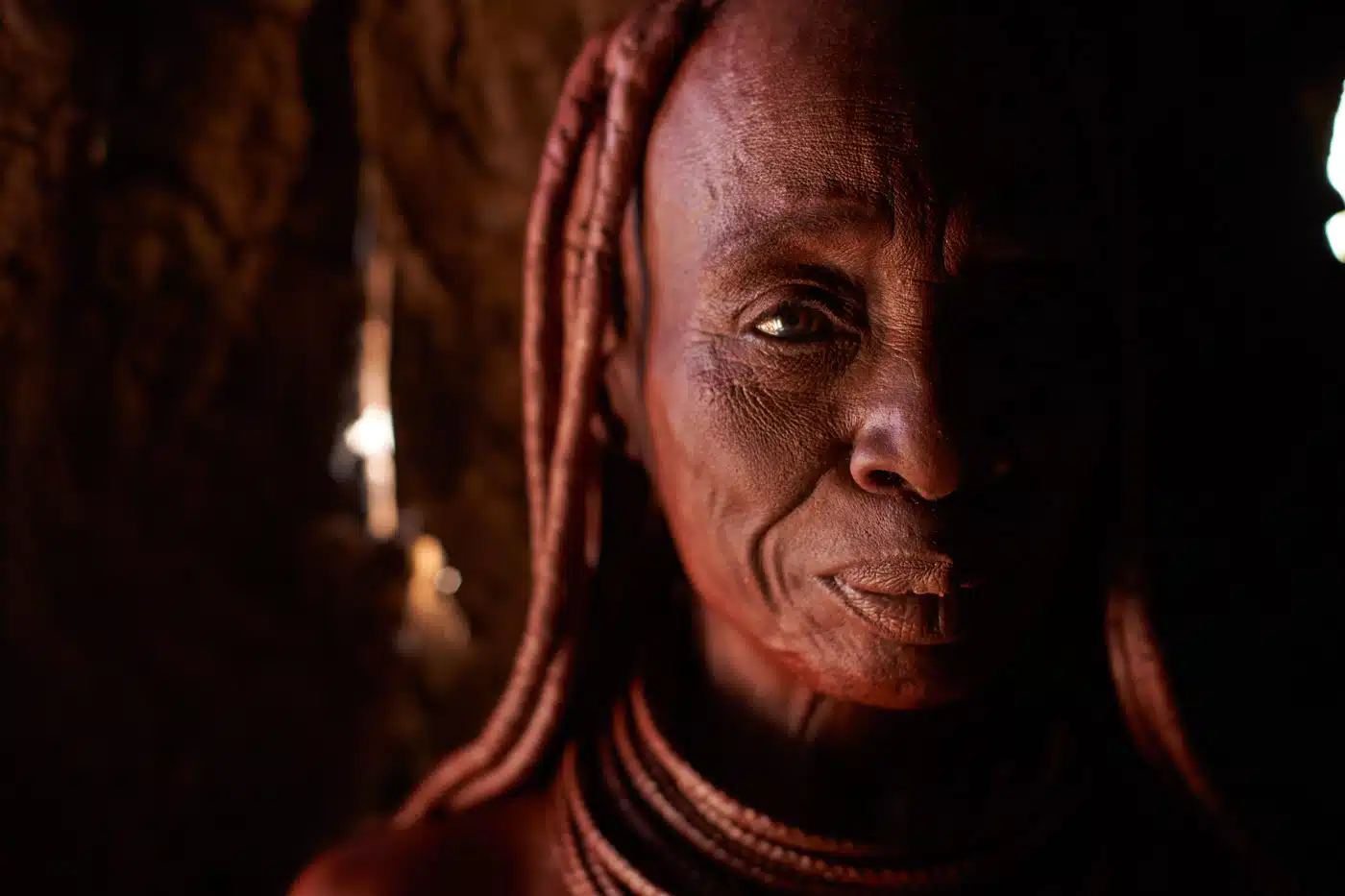
Their Hair Extensions are Remarkable
The style of hair extension can indicate social status and age. The OvaHimba people follow a diet that consists of honey, wild herbs, and chicken eggs. They obtain milk and meat from their livestock, and they also cultivate rain-fed maize and millet. Additionally, the tribe breeds cattle and fat-tailed sheep, which serves as a notable symbol of their prosperity. OvaHimba women frequently wear hair extensions made from goat hair sourced from the livestock they raise.
The OvaHimba people start their lives with bald heads, but as they grow, they have the option to let their hair grow and style it in a plaited braid. Twins may have one braided plait of hair while little girls and young boys have two plaits of hair angled towards their face at the level of their eyes. Sometimes, a small patch of hair is allowed to grow on the crown of their head or their heads are shaved entirely, depending on their descent (patrilineal oruzo) or membership, which determines the exact style they will keep until they reach puberty.
The hair can be parted from the back and tied together in plaits. The plaits, which can be arranged to veil the face, will start adding otjize-textured hair at the onset of puberty for girls.
Approximately one year after giving birth, the Erembe style of headwear is exclusively worn by females who are married. On average, men from the OvaHimba, a polygamous tribe, have two wives. The act of marrying girls as young as 10 to suitors chosen by their fathers is illegal in Namibia, and even the OvaHimba themselves are increasingly against this practice, although it still remains prevalent. The Erembe is crafted from sheepskin and numerous braids of hair, which are all colored and secured using otjize. The OvaHimba cleanse their hair by using wood ash, as water is an incredibly scarce and valuable resource.
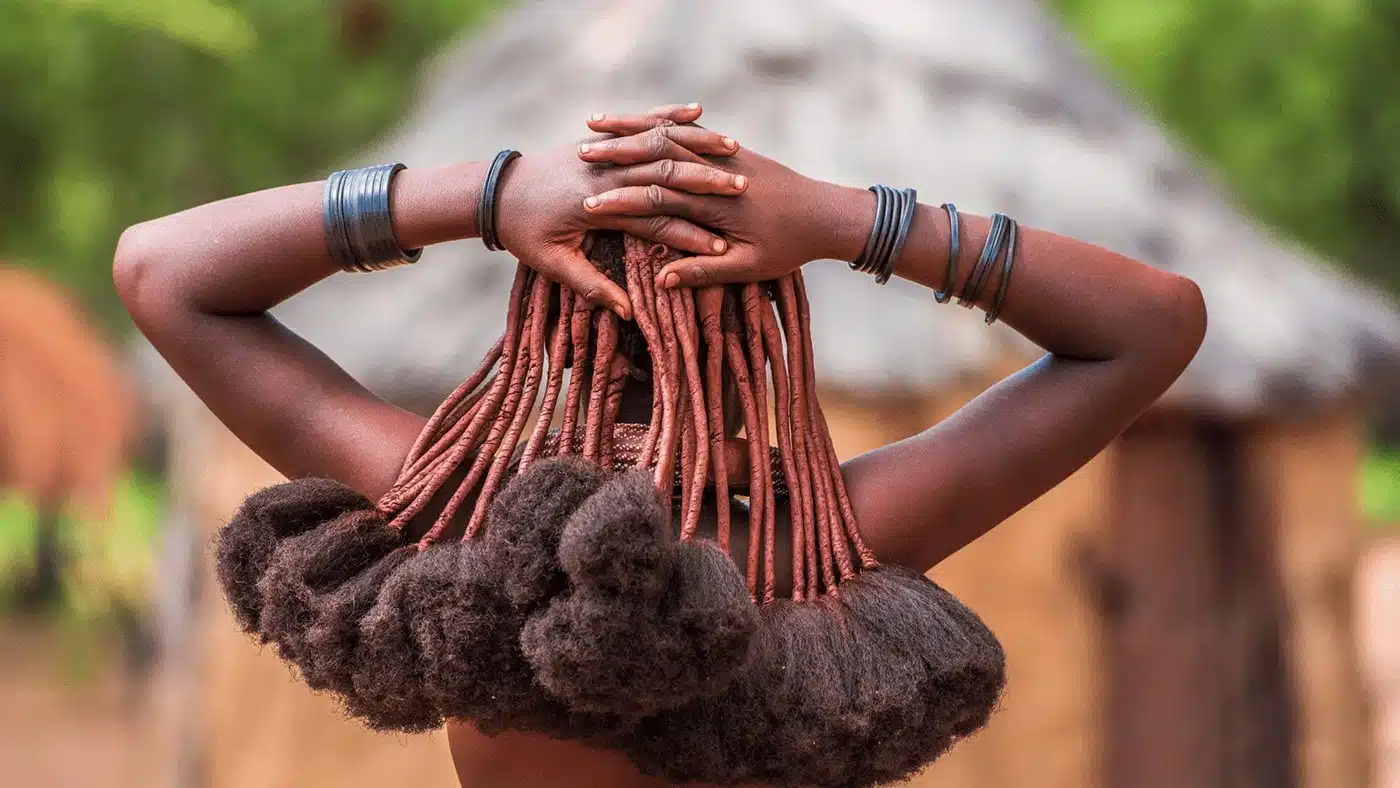
The OvaHimba people use a blanket to enclose themselves and capture the smoke and warmth. They lean over the bowl and begin to sweat as the smoke rises, placing burning charcoal into a small dish filled with herbs like leaves and branches from the Commiphora tree. OvaHimba females engage in a regular smoke bath as a means of upkeeping their personal cleanliness, thereby prohibiting the use of limited water for washing purposes.
After they enter into marriage, males undergo circumcision prior to reaching puberty and are regarded as adults, whereas genuine females are only considered girls once they have experienced childbirth.
The Himba Create Stunning & Elaborate Jewelry
Women of the OvaHimba tribe are extremely active physically, even more so than the boys and men. They use plaster made from cow manure and red clay soil to cover the wooden homes of the homestead (onganda), and they carry water. They still somehow find time to make exquisite clothes, handicrafts, and jewelry, as well as serve and cook meals. They tend to goats and cows to create soured milk, collect firewood, and tend to the vines of the calabash. They also use plaster made from cow manure and red clay soil to cover the wooden homes of the homestead (onganda), and they carry water.
Women wear necklaces and arm bracelets made from copper, fabric, vegetation, and beads made from ostrich eggshells. The weight of these personal accessories can reach up to 90lb (40kg).
An OvaHimba woman’s most private part of the body is her ankles and these are covered by a sleeve of iron bracelets.
Himba Faith & Governance
Adjacent to the flames, the hallowed rock consistently possesses timber readily available to nourish the continuously smoldering fire. The ladies employ fragrance, antiperspirant, and antibacterial body cleanser while crafting incense from fragrant herbs and resins, and utilizing the smoke. The sacred livestock, known as the sacred ancestral fire (okuruwo), and their monotheistic animist deity Mukuru, together form the Trinity that encompasses the core of each family’s existence among the OvaHimba.
Once a week, the fire-keeper of the family will approach the sacred ancestral fire to communicate with Mukuru’s representatives, the ancestors, when God himself is otherwise occupied in the holy fire rising into the heavens through the transporting smoke.
No one has received an invitation to visit an OvaHimba village where the entrance to the chief’s hut is not allowed to cross the holy line running directly from the main entrance of the village to the entrance of the cattle enclosure and the holy fire.
The OvaHimba people also strongly believe in the power of traditional African healers, who are known for their substantial transfers of belief in witchcraft. It is loosely understood what exactly the definition of witchcraft is in this context.
The Brutal Himba Past
It has not only been the typical factors and severe intermittent drought that have challenged the OvaHimba.
The Ovaherero, the Nama, and the San experienced the initial endeavor of racial eradication by the German Empire from 1904-1908, when Lothar von Trotha endeavored to carry out ethnic cleansing against the community.
In the 1980s, Angola found itself in the midst of a perfect storm, with the tribe being used as pawns in a political conflict along the southern African border. Additionally, they faced the double threat of a severe drought, which resulted in the killing of 90 percent of their livestock.
Today, the OvaHimba continue to stand resilient. In a contemporary setting, they demonstrate their exceptional abilities by effectively collaborating with global advocates to prevent the construction of a hydroelectric dam that poses a risk of submerging their ancestral territories. Their remarkable skill in preserving their cultural heritage is truly admirable.
Protesting and disrespecting their cultural heritage while exploiting a German reality TV program, they expressed their commitment to their culture by actively engaging in contemporary cultural matters. The OvaHimba lodge complaints to the African Union and the OHCHR regarding infringements on their civil, cultural, economic, environmental, social, and political rights. They are also advocating against culturally unsuitable schools for their children and the confinement of Ovatwa individuals in fortified camps in northern Kunene.
A Planet in Just Four Hues
The OvaHimba perspective on color is fascinating. They only acknowledge four shades.
Porridge is an integral part of Himba culture
The OvaHimba seldom consume meat, but they regularly consume their main porridge, which is made by boiling water and then combining it with either maize or occasionally mahangu (pearl millet) flour and oil, twice daily.
Eggs and milk are also consumed, although once again, these are only consumed in moderation.
A Cultural Dilemma
It is thought that the OvaHimba’s remarkable level of social dynamism becomes even more impressive when one considers their unwavering commitment to their culture. The OvaHimba have managed to preserve their customs by residing in one of the harshest environments on the planet and isolating themselves from external influences.
They coexist harmoniously with members of Namibia’s other ethnic groups and actively engage with the local urban culture, rather than isolating themselves. Prior to reverting back to their traditional way of life and cultural roots, they willingly visit supermarkets, consume modern cuisine, and avail themselves of modern healthcare facilities.
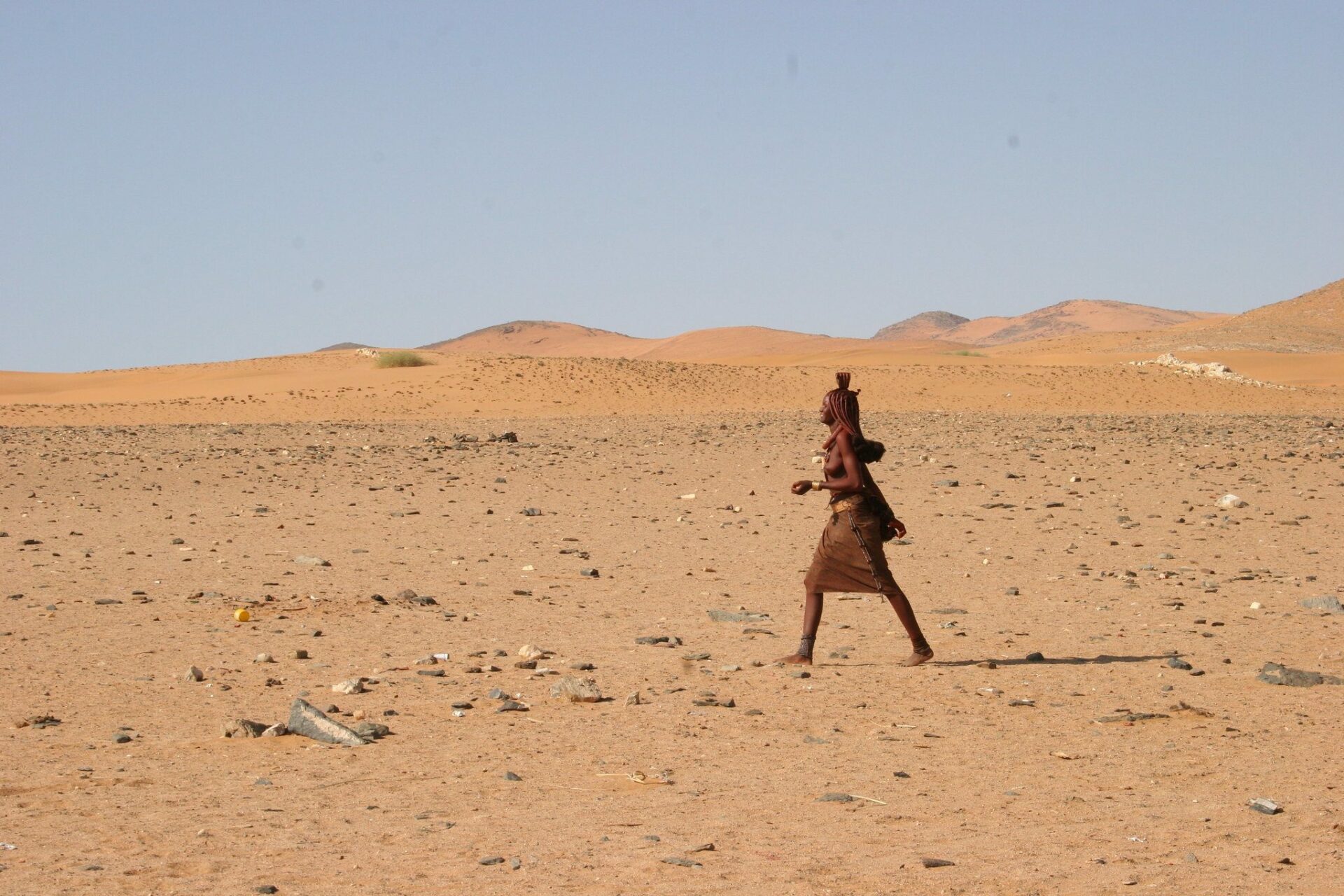
Inheritance is determined matrilineally, which means that the son inheriting his father’s cattle is actually the son of his uncle on his mother’s side. On the other hand, daughters will live with their husband’s clan after marriage, and the clans are led by the eldest male member. The tribal structure is based on bilateral descent, where every clan member belongs to both their own patriarchal and matriarchal clan.
The descent bilateral system is rare and only found in harsh environments in Polynesia and Melanesia, Australia, India, and West Africa.

Explore the Himba People
The allure and mystery of Africa can be attributed, in part, to the multitude of captivating tribes and cultures found across the continent, ranging from the Mursi tribe in Ethiopia and the Maasai tribe in Kenya to the San people in Botswana and Namibia.
Rothschild Safaris places significant importance on selecting properties and locations that align with our values and respect local traditions. In addition to including ethical cultural visits in our itineraries, our travel designers prioritize supporting local communities.
Wherever your travels may lead you, take the opportunity to establish cultural connections to enhance your safari adventure.
